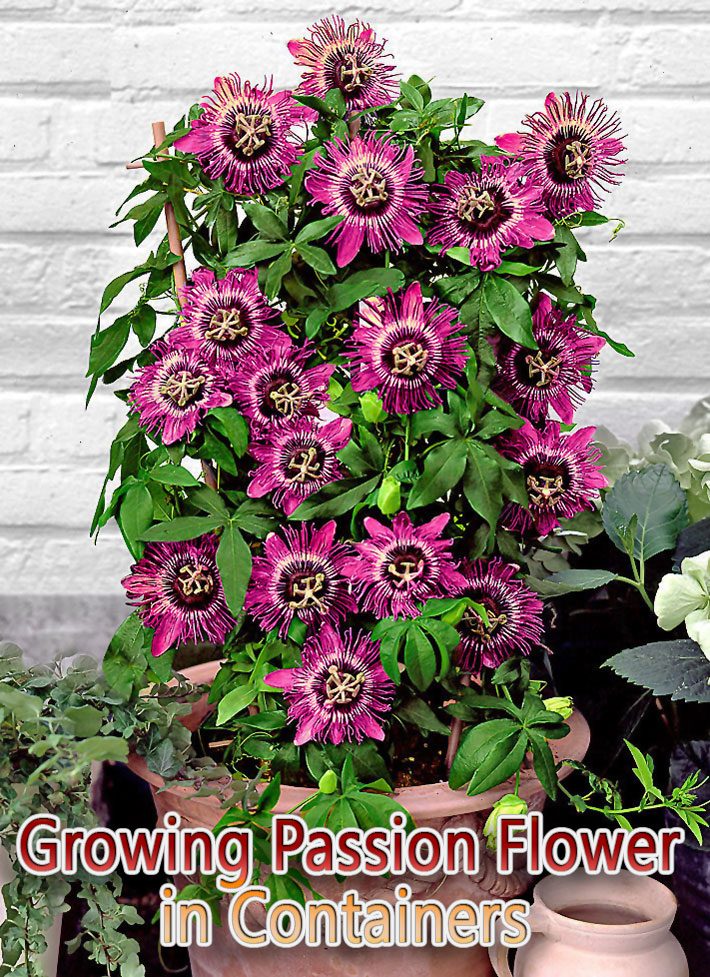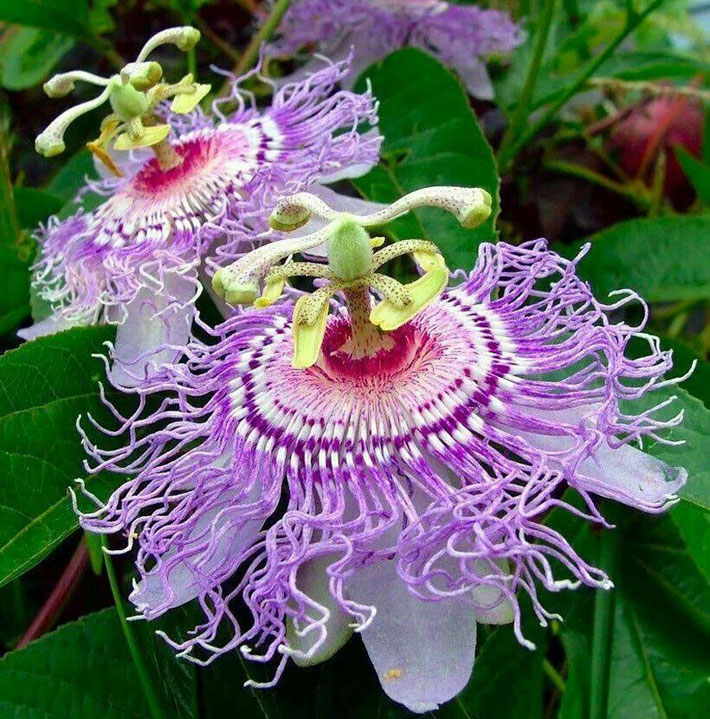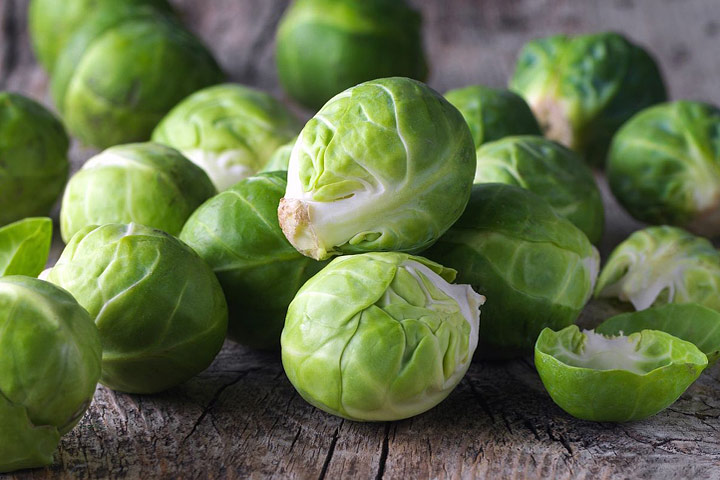
Passion Flower gained its name from the unique structure of its flowers and their symbolic importance. According to the plant’s original catalogers, each of the flower’s structures is religious in nature: the corolla reflects Christ’s crown of thorns, the five stamens are for the five wounds in his hands, feet, and side, and the three stigmata are for the nails that were used to nail Christ to the cross.
Whatever their religious significance, there is no question that passion flowers are beautiful and strange, especially the most commonly grown houseplant, the P. caerulea. But make no mistake: growing a successful passion flower is a bit like grabbing a tiger’s tail. They are robust, rampant vines under ideal conditions that may need frequent pruning to stay well behaved.
Growing Conditions
- Light: Bright light, especially during the summer growing season. Full sun is preferable in the summer, with as much light as you can give during the winter.
- Water: Keep the plants moist at all times during the growing season, and you might have to water larger plants twice a day in heat. During winter, reduce watering but don’t let them dry out.
- Temperature: Warm in summer (household temperatures are fine) and colder in winter months (down to 50˚F at night). They are generally hardy, and even if they die back to the soil, they will likely recover next spring.
- Soil: A rich, fast-draining mix is ideal.
- Fertilizer: Fertilize adequately during the growing season, with controlled-release fertilizer and liquid fertilizer.
Propagation
Passion flower is easy to propagate with leaf-tip cuttings. Take cuttings in the spring. Strip off a few leaves to expose nodes and bury the cutting in moist seedling starting soil.
Keep in warm and bright place until new growth emerges. Rooting hormone is likely not necessary as passion flower easily roots from cuttings.
Repotting
Repot young plants every spring into a larger pot. Older plants can be stretched out every few years between repotting. To control their size, it’s best to cut your passion flower down in the fall, leaving only a few vines of between 15″ and 20″ long in the pot. Be aware, however, that plants trimmed in this way will still need to be repotted or at least refreshed.
Varieties

There are several varieties of passion flower. In subtropical and tropical regions, these are used as butterfly and landscape plants, and collectors pride themselves on large collections. Indoors, however, by far the most commonly grown passion flower is the blue and purple Passiflora caerulea, which has a number of named hybrids. The P. incarnata also features blue flowers, with a more frilly appearance. Red passion flowers include the P. manicata. In general, the blue passion flowers are a bit more well behaved in comparison to the red flowering species, which can be monstrously aggressive growers.
Grower’s Tips
Passion flower vines have deeply lobed leaves with flowers that hang or peek out from the leaves.
Some of the species have edible fruit, which is a sweet and delicious tropical fruit. As vines, they can pose a challenge to the indoor grower. Outside, passion flowers are grown on walls, fences, and trellises, where they are frequented by many varieties of butterflies. Indoors, however, their sprawling vines can be troublesome.
One particularly effective way to manage their growth is to train the vines around a wire support, such as a loop of wires forming a giant oval above the pot. In terms of pests, the greatest danger is usually mites or mealybugs. Both can be controlled with insecticidal soap. Lastly, passion flowers are rampant growers during the growing season and benefit from plenty of sunshine, water, and fertilizer, as well as frequent pruning, which can even stimulate more blooms.




I was wondering if you can plant other plants with it in a container?